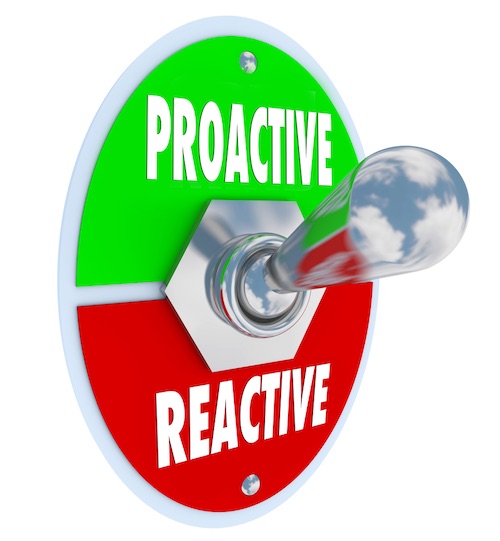“It is important to reach out to Tech Transfer anytime collaboration with another individual or team outside of your institution is considered.”
 Breakthrough discoveries often receive the spotlight and intellectual property (IP) protection. Unfortunately, lesser, yet nonetheless valuable, contributions often go unrecognized and unprotected. Determining when to contact your institution’s Technology Transfer Office in order for them to assess research projects for IP protection is vital. Reaching out to Tech Transfer early and often will help researchers protect their accomplishments and receive the recognition they deserve.
Breakthrough discoveries often receive the spotlight and intellectual property (IP) protection. Unfortunately, lesser, yet nonetheless valuable, contributions often go unrecognized and unprotected. Determining when to contact your institution’s Technology Transfer Office in order for them to assess research projects for IP protection is vital. Reaching out to Tech Transfer early and often will help researchers protect their accomplishments and receive the recognition they deserve.
Indicators of Patentability
It can be difficult to determine when a finding warrants legal protection. However, there are common situations in which valuable inventions typically arise. Recognizing these scenarios can assist researchers in determining when to contact Tech Transfer to secure appropriate protection. The following are examples of situations that frequently give rise to valuable inventions.
Public Disclosures
A discovery that is significant enough to warrant publication or public disclosure suggests that it has value and may be worth protecting. At this time, a summary of findings is likely complete and may be easily sent to Tech Transfer for evaluation. Disclosure to Tech Transfer should ideally occur prior to any public disclosures, as there may be restrictions on protection once an invention has been publicly disclosed. Even if a disclosure has already been made, it is still often prudent to contact Tech Transfer as soon as possible to determine whether IP protections are still attainable (which, in many cases, they are).
Applying for a Grant
Similar to public disclosures, if your lab has a grant-worthy idea, it may be worthwhile to protect it. Indeed, in some cases, the grantee is required to file a patent application, or the granting agency assumes the grantee does not wish to retain dominion over the invention. In certain circumstances, a grant proposal may be considered a printed publication, rendering it prior art against a patent filed more than one year after the grant proposal became publicly available under the Freedom of Information Act. So, it is important to keep these disclosures in mind when developing an IP strategy. Don’t get trapped by these nuanced rules; consult with Tech Transfer before submitting a grant application.
Before Entering Into Collaborations
It is important to reach out to Tech Transfer anytime collaboration with another individual or team outside of your institution is considered, whether with another academic/non-profit or company. Even if there is no formal collaboration, contact the Tech Transfer office before informally working together or exchanging any confidential information. In some situations, it can be important to protect IP before entering into any collaboration/joint research so that there is clear delineation of IP that was developed solely at your institution (also described as the institution’s background or pre-existing IP) and not developed IP under the collaboration/joint research (which may or may not be owned by your institution).
Milestones
Development Milestones: Often, meeting milestones (as defined by grant funding or in a joint development agreement) signifies inventive progress and is an important time to evaluate if any IP has been developed. To achieve this, schedule meetings with Tech Transfer to coincide with research developmental milestones.
Prototypes: When a new prototype is constructed, or when a new generation of an invention is complete, it is another good time to reach out to Tech Transfer. It is important to evaluate IP protection at each project iteration to confirm that prior applications were written broadly enough to cover the new improvements or to protect the new additions with a new application.
Development of Research Materials and Tools: Researchers frequently create research materials and tools to address an underlying issue in their research. Such research materials and tools may or may not be eligible for patent protection, but they may be valuable nonetheless to the research community and have potential commercial value for companies. Tech Transfer can work with you to determine options for protecting and commercializing research materials and tools.
Improvements
Most improvements can be protected by some form of IP, although it is unlikely that the research institutions will want to expend resources protecting every improvement. Consider focusing your discussions with Tech Transfer on enhancements that add new functionality or features and are distinguishable from the current gold standard or market offerings. A further indication that an enhancement may have patentable and commercial value is if a feature enables access to new or additional applications or expands the use of an existing invention.
Create A Culture of IP Protection
Quarterly IP Reviews: Setting up quarterly IP reviews can be a great way to create a culture of IP protection within your lab. Group IP review meetings can also provide a platform where teammates can champion one another, recognizing other’s accomplishments that may not have otherwise been highlighted. Knowing this meeting is approaching may encourage teams to reflect on the work they and others have recently performed and consider whether it is worth protecting.
Set IP Smart Goals: Establishing IP goals is easy to do. Here are some ideas:
- You/your lab will reach out to Tech Transfer once per quarter
- You/your lab will reach out to Tech Transfer before every publication/presentation/grant proposal
- You/your lab will reach out to Tech Transfer before entering into collaborations
- You/your lab will work with Tech Transfer to file one provisional patent application per year
- Set as a goal that every lab member submits one invention disclosure per year to Tech Transfer
- Have a team dinner for those who were named inventors on patents and/or submitted an invention disclosure
Takeaway
Thus, to help ensure research is protected and researchers receive recognition, remember: (1) to reach out to Tech Transfer early and often, particularly when an indicator of patentability, discussed above, is achieved and (2) to create a culture of IP protection.
Snell & Wilmer Summer Associate Madeline Ward also contributed to this article.

![[IPWatchdog Logo]](https://ipwatchdog.com/wp-content/themes/IPWatchdog%20-%202023/assets/images/temp/logo-small@2x.png)


![[Advertisement]](https://ipwatchdog.com/wp-content/uploads/2024/04/UnitedLex-May-2-2024-sidebar-700x500-1.jpg)
![[Advertisement]](https://ipwatchdog.com/wp-content/uploads/2024/04/Artificial-Intelligence-2024-REPLAY-sidebar-700x500-corrected.jpg)
![[Advertisement]](https://ipwatchdog.com/wp-content/uploads/2024/04/Patent-Litigation-Masters-2024-sidebar-700x500-1.jpg)

![[Advertisement]](https://ipwatchdog.com/wp-content/uploads/2021/12/WEBINAR-336-x-280-px.png)
![[Advertisement]](https://ipwatchdog.com/wp-content/uploads/2021/12/2021-Patent-Practice-on-Demand-recorded-Feb-2021-336-x-280.jpg)
![[Advertisement]](https://ipwatchdog.com/wp-content/uploads/2021/12/Ad-4-The-Invent-Patent-System™.png)






Join the Discussion
No comments yet.